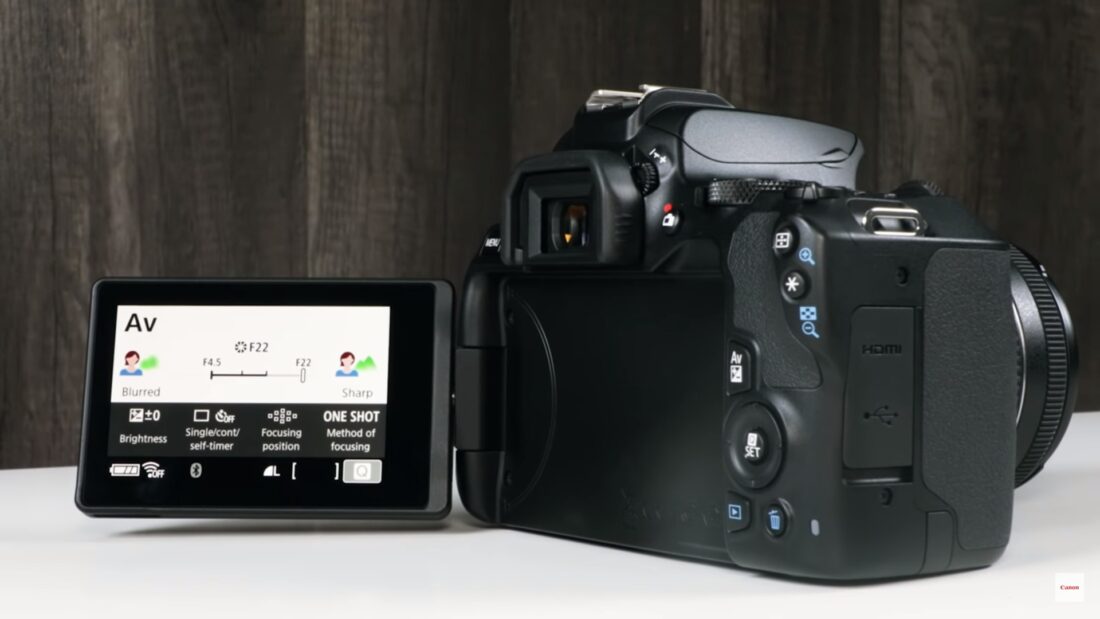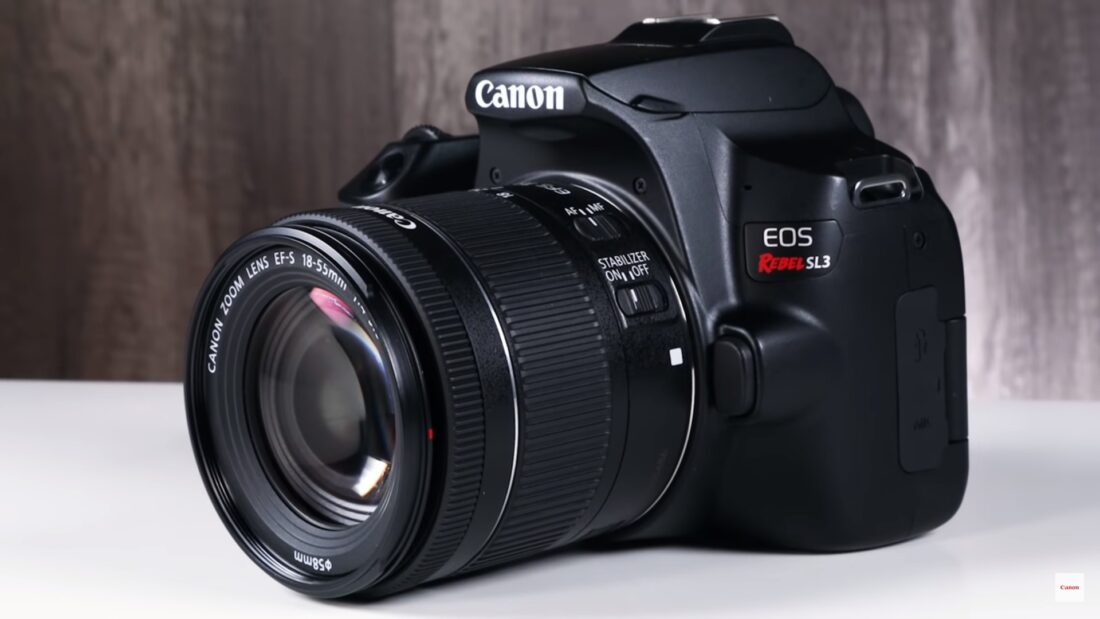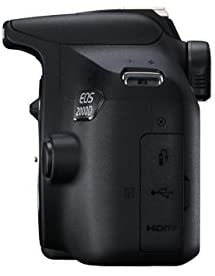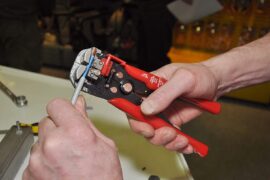Canon is undeniably one of the leading giants in the industry and our first option when looking for professional cameras. However, given Canon’s reputation and its top-notch technology, its cameras don’t come cheap. Well, that is the case for its high-resolution and latest flagship products. In that case, if you are looking for the cheapest Canon camera, you might want to look for its past catalogs.
There are current models as well that are specifically designed for those who are looking for budget-friendly units. In the coming years, you can expect a decrease in the price of these cameras. But there is no need to wait that long as the company already offers excellent discounts for some of its products.
Nonetheless, it is apparent that there is a huge difference in the price of Canon cameras depending on the type of unit. Point-and-shoot cameras can be extremely cheap but Canon also has mirrorless and DSLR entries that can be cheaper than them. Some of them include the Canon EOS M200 and Rebel T7.
To get things easier for you, we checked on the past catalogs of Canon to give you the cheapest cameras the brand can offer. Nonetheless, besides the price, we ensure you get the best bang for your buck in each entry we would present in terms of features. With the guidance of SolidSmack Photography Editor Evangeline Summers, we weighed on our shortlist to pick the Canon cameras with the right balance between a cheap price tag and a quality set of features. Here they are:
Best Cheapest Canon Cameras Comparison & Rating
Cheapest Canon Cameras | Features |
1. Canon EOS Rebel SL3





EOS REBEL SL3 or EOS 250D costs higher than EOS 2000D but the extra bucks you will pay will give you access to features only available in cameras exceeding a $900 budget. This makes it one of the cameras that will certainly give you your money’s worth in every way possible. This makes it the best budget DSLR and one of Canon’s best cameras.
Further, though it is employing just the same number of AF points as EOS 2000D, its viewfinder relies on a phase-detect autofocus system.
“Though its viewfinder only comes at 9-point phase-detection points, its Live View comes with 3,975 selectable AF points that are well distributed across the frame,” said Summers. “SL3’s Dual Pixel CMOS AF system is very efficient in recognizing, locking, and following the focus to the subject on the screen with just a single tap of your finger.”
To make things even better, its Live View mode can be enjoyed through the touch-sensitive fully articulating LCD display. As Summers reported, composing your shots makes you feel like you’re using a “mirrorless unit” due to its speed and convenience.
On the other hand, it is true a bit of a downside realizing it only offers 5fps max burst shooting but in the real world, this is decent enough for its price. After all, SL3 lets you get the experience of 4K/30p! Also, the camera is designed with an APS-C CMOS sensor that has a 24.1 MP resolution and is backed with a Digic 8 processor. Merging the abilities of the two results in exquisite detail and color rendition capabilities.
“Its dynamic range is just right; just the right amount of details in dark and bright spots. It is really not something of a deal-breaker since it is comparatively almost the same as the performance of SL2. However, it has a great improvement in the noise control and level even at the highest ISO settings,” said Summers.
Rebel SL3 is also a great beginner DSLR due to its dedicated features for novices.
“Besides giving the market a smaller size of DSLR,” Summers added, “you’ll also get other helpful functions that improve user experience. For instance, it introduces a Guided UI, a viewfinder with distinctive autofocus points, and a Creative Assist mode. All of them are targeting novice users. This makes it not just a compact camera, but also a very beginner-friendly unit, as well.”
2. Canon EOS M50




We have featured Canon EOS M50 Mark II below which costs $30 to $50 higher than the original M50. The main differences between the two are autofocus, battery life, and the addition of YouTube live streaming in M50 Mark II.
“We can say that Mark II is a better deal than its predecessor,” said Summers, “but if you are after the cheapest deal - which is the main objective of this review - then EOS M50 is the one for you. After all, the additions in the M50 II are just improvements to the features already existing in M50, except the YouTube live streaming capability.”
Canon EOS M50 gives you the basics and is decent enough for all the needs of beginners and even enthusiasts.
“It comes with Canon’s Dual Pixel CMOS AF employing 99 AF points. It can even be bumped up to 143 points with the right lenses and you can use it both for stills and 1080p videos. Under AF-S, there is also an option for Eye Detection mode and there’s also silent shooting scene mode,” said Summers.
Also, compared to its competition at the same price range, it comes with an electronic viewfinder and a fully articulating touchscreen where you can enjoy the touch-focus function to the fullest.
There is also a 24 MP APS-C CMOS sensor joined by a new DIGIC 8 processor, allowing the camera to have that power despite its small body and price. And although its 4K/24p videos have a 1.7x crop factor, you have the option for 1080/60p and 720/120p. Its burst shooting can also go as fast as 10fps and 7fps with the AF on.
Further, it is fashioned with some technologies to cope up with other new models from other brands. It includes Wi-Fi and NFC with Bluetooth which will allow users to automatically send the shots to their phones.
3. Canon EOS M200




If Rebel SL3 is the best budget DSLR, Canon EOS M200 can be the cheapest mirrorless camera on the market. But it doesn’t look cheap with all the stellar features it offers for a camera under $500.
“I would suggest it for those who want an upgrade from their smartphone photography or for travelers looking for a camera with a compact system,” said Summers. “It supports vertical video capture and can capture 4K videos up to 30fps and has a modest resolution for stills, thanks to its 24 MP APS-C CMOS sensor and Digic 8 processor.”
According to Summers, it is a stirring action from Canon to design it this way given that it is an insanely cheap unit. With this, it has the panache to render decent details and colors at satisfying levels for beginners. It isn’t as good as other high-resolution cameras but again, it is a cheap camera so it is still quite impressive. Further, it still comes with the brand’s Dual Pixel autofocus system with up to 143 AF points depending on the lens being used. We didn’t even expect it to perform well in low-light conditions but it does! Face Tracking and Eye Detection AF are also first-class in doing their jobs, whether you are in a low-light environment or the subject’s face is momentarily obscured.
But, of course, as a cheap unit, expect some caveats. This includes the limitation of the autofocus when you shift to 4K shooting where you will end up with the slow contrast-detect AF. Thankfully, the Dual Pixel can still be enjoyed in shooting stills and 1080p videos. Its burst shooting, on the other hand, is fairly good for its price. Without the AF, the 6.1fps will be enough for the use of novices but if you wish to use the continuous AF, it will drop to 4fps.
And just like Rebel SL3, it is very ideal for beginners. Besides the user-friendly features such as the simplified button layout and tilting touchscreen (very responsive, BTW), it comes with Canon’s Creative Assist and other guide modes. Unfortunately, it doesn’t come with a viewfinder which is a major drawback for folks who plan to use it for street photography.
4. Canon EOS 2000D





We have reviewed Rebel T7 or EOS 2000D before as one of our budget DSLR entries and it is still true up to this point. It still impresses and who knew Canon would give us a DSLR much affordable than the new GoPro cameras?
Apparently, however, there are some cutbacks in some areas of the camera to make its entire body affordable for the market. One is the fact that it doesn’t come with a 4K capability and its screen can’t even tilt and is not touch-sensitive. The AF system is also not at the top of the class with its 9 AF points which are contrast-based. Yet, this is not the point of this review and we are not looking for a high-end Canon camera with all the bells and whistles and it is impossible to get that at this price. If that is your case, we suggest checking our best professional camera roundup.
As for EOS 2000D, it offers the basics. With this, if you are someone who is about to start your journey with DSLRs but doesn’t want to break the bank, this is a good option. It boasts a 24.1 MP APS-C sensor but with a rather old Digic 4+ processor. Yet, the performance is still reliable especially in AF which, given the right lighting condition, can work wonders. The image quality is also great and can impress students and beginners.
According to Summers, there are “sufficient details in the stills and the colors have the right saturation and contrast.” Yet, she reiterated that there is a caveat here due to its processor. It can only offer ISO 12800 as the maximum setting which can affect its performance in low-light conditions.
5. Canon PowerShot SX720 HS




PowerShot SX720 HS is a ridiculously cheap compact camera that, without any exaggeration, has a lot to offer. It starts with the 40X optical zoom all packed in its small body. It is equivalent to 24-960 mm in 35 mm terms. And as if its abundance of optical zoom is not enough, you also have the option for Zoom Plus, a digital zoom providing 80X more reach.
Given its nature as a compact camera, however, expect a smaller CMOS sensor that comes at the size of 1/2.3 inches.
“On a positive note,” said Summers, “Canon gives it a back-illuminated design for better light accumulation. Also, the 20.3 MP sensor is aided with Digic 6 processor which is not a bad thing for its price.”
PowerShot SX720 HS’s video capability comes at a maximum resolution of 1080p but the camera doesn’t lack the tricks to amaze users.
“It has the Hybrid Auto mode which allows you to record 2-second videos the moment you half-press the shutter button,” explained Summers. “Besides saving the sharp and vibrant photos, the videos will also be saved and combined by the camera for you to view later. This can be a good way to capture and record important candid scenes on various occasions.”
As for the AF system, it does a great job for its price. It is surprisingly fast and you also get Tracking AF or Face AiAF which gives priority to the subject’s faces. On the other hand, despite having just a simple 3-inch fixed LCD screen, it boasts Wi-Fi and NFC connectivity to make file transfer as easy as possible.
Cheapest Canon Cameras - Buyer's Guide
The first thing you need to consider before buying a Canon camera is your skills. The same goes for other brands. However, since Canon has a wide range of camera models, it could mean some work. Make sure to research some beginner-friendly cameras that often come with intuitive functions and buttons. The features of the camera can also contribute to this. For instance, Canon’s Dual Pixel CMOS AF system can be of great help. This will enable you to lock the focus of the camera with just a tap of a finger in the Live View option. Having it in all resolutions will be better.
Once you have identified your skills, it is time to find your needs in the camera. Whether you are after beautiful stills or high-resolution videos, you can certainly find a model in Canon that will suit your needs. With this, take some time to weigh the specifications and features of the camera and decide whether they equate to your needs or not. Most specifically, check for the size of the sensor and the type of the camera.
Bigger Canon cameras often come with a bigger set of features to enjoy, especially when it comes to sensors. However, if gripping a huge cam can be a concern, opt for smaller units with buttons and functions that are easier to reach. This should allow you to have a lighter camera with a smaller body allowing better hold. However, this comes with the possibility of the camera being stripped off of some features. If that doesn’t bother you, it won’t be a problem.
Check for other important features of the DSLR such as the size of the viewfinder, availability of image stabilization, movement of the LCD screen, buffer capacity, number of SD card slots, number of AF points, button layout, and more. Remember to tick the boxes you are looking for in a Canon camera to assure you’ll get the best for your needs.
Cheapest Canon Cameras - FAQs
EOS in Canon simply means Electro-Optical System which is the autofocus single-lens reflex and mirrorless camera series of the brand.
There are pros and cons to both the DSLR and mirrorless cameras of Canon. While mirrorless cameras are commonly more compact, lighter, and more equipped for video purposes, DSLR excels in terms of battery, viewfinders, and flexible lens choices.
Yes, Canon RF-mount lenses are weather-sealed. You will notice it since the lenses come with a rubber/plastic-like gasket pressing against the lens mount on the camera.
Canon DSLR cameras employ phase detection, contrast detection, and sometimes both. In the OVFs, phase detection is the main technology being used. Canon also integrated this in its Dual Pixel CMOS AF when shooting in Live View. This gives users a better and faster autofocusing experience in most of its DSLR cameras.
There are 3 types of lenses Canon is offering for their consumer interchangeable lens cameras. These are the EF-S, EF, and EF-M lenses.
The red circle on the lens mount means the camera compliments EF lenses. If there is a red circle and a white square, it means the camera can also use EF-S lenses. Lastly, the white circle means the camera is for EF-M lenses only.











